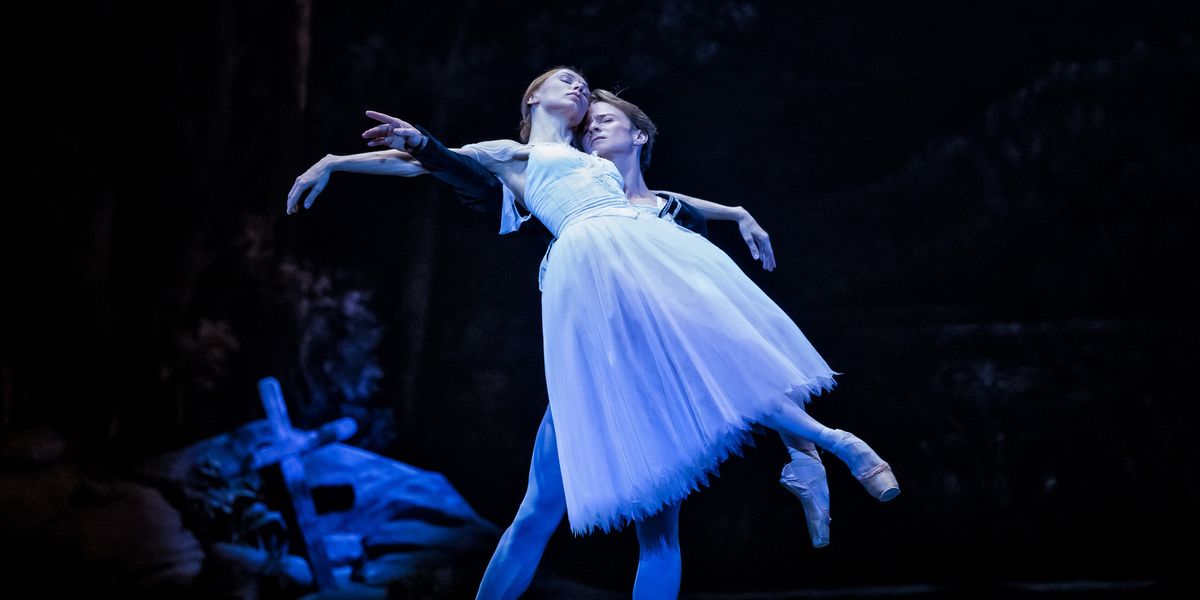How Staatsballett Berlin Pulled Off "Giselle" in the Age of Coronavirus
It’s 8:24 am on a Tuesday. Even though morning class isn’t for another hour and a half, Daniil Simkin is already at Staatsballett Berlin‘s studios; tests for the coronavirus, a biweekly requirement to dance with his partner, Iana Salenko, need to be submitted before 8:30 am—an inconvenient time, if you ask him. “It’s annoying, but I’m just really grateful to be performing again,” he says. “You do what you have to do.”
Staatsballett Berlin has been back onstage since August. Return has been slow and steady, with dancers first performing solos or pas de deux (composed of people who already live together) in galas. From October 28–30, the company presented an adapted version of Patrice Bart’s Giselle, its first full-length production since March. (Due to a surge of coronavirus cases in Germany, November performances have been cancelled.) Pointe took a virtual behind-the-scenes tour to learn what goes into mounting a ballet during a pandemic, including safety precautions, adjustments to choreography, and what it feels like to be back onstage.
Safety First
So far, Staatsballett has only had one coronavirus case. To maintain that record while setting a full-length ballet, strict rules are in place to enforce social distancing. Dancers wear masks any time they aren’t dancing, and refrain from physical contact with their colleagues—unless they undergo regular testing. During rehearsals, extra precautions are taken: Artistic staff wear masks in rehearsals, and studios are aired at regular intervals.
Current acting director Dr. Christiane Theobald chose Giselle because of her close contact with Bart, who was willing to adapt the production to the current situation. “The symmetry in Act II allows for more distance, and fewer dancers, without losing relevance,” says Theobald. “When I asked Patrice Bart for permission to perform a corona-friendly version, he was on board right away.”
Guidelines also make it possible for the audience to enjoy the performances. At Staatsoper Unter den Linden, tickets are limited (a total of 531 per evening, out of 1,224 seats), and audience traffic flow is regulated both before and after the show, and during intermission. Audience members fill out contact forms when buying their tickets, are spread at a distance from one another, and wear masks during their entire visit to the theater.
Adjusting Choreography
Choreographic changes in group scenes were crucial toward making Giselle safe for the dancers. Bart’s assistant, Raffaella Renzi, visited the choreographer for eight days at his home in Normandy to decide on changes before going to Berlin. “We do all we can to follow protocol in rehearsal,” Renzi says. “I use my judgment if something doesn’t work in the studio.” In Act I, changes mean more steps for the men, since all partnering in the corps has been removed.
In Act II, adjustments impact spacing more than choreography. Wilis were reduced to 12 (the production typically has up to 24), plus two soloists. They remain 1.5 meters, or about 5 feet, apart when moving slowly, and 2 meters (6.5 feet) apart when running. For the famed crossing arabesque hops, dancers are staggered and spread farther apart, allowing them to pass each other while maintaining distance.
For the principals, nothing has changed in the pas de deux—but navigating the mad scene in Act I poses a particular challenge. Iana Salenko describes the sensation of unraveling her Giselle while steering clear of her colleagues: “I’m with the group, but I feel more alone than ever,” she says. “It’s really unfamiliar.”
Together, But Separate
The company might be back at work, but the atmosphere is definitely not normal. Dancers train and rehearse in shifts, rarely coming in contact with colleagues in other groups. They wear masks during costume fittings and when walking in the hallways. Corps dancer Katherine Rooke describes the strange dynamic: “We’re so used to interacting freely at work. Now we see each other behind masks, and can’t touch each other. It’s such a different approach.”
Backstage, dancers wear masks until just before stage entrances. To have their hair done for the show, they arrive for their appointments right after washing their hair. The crew and orchestra, both crucial parts of bringing Giselle to the stage, though in reduced numbers, have practically no contact with the dancers. But for Rooke, the oddities are worth it: This is her first performance since March.

Yan Revazov, Courtesy Staatsballett Berlin
Telling a Story
Putting it all together is the final step. As Renzi conveys, this Giselle is a memorable experience for all involved: “The dancers are so eager to perform, and the audience has missed them. Hopefully this story will help everyone forget. It’s something very special,” she says.
For Simkin, appreciating the present moment is the best way to enjoy his return to the stage. “Uncertainty is the worst part of this time,” he admits. “We just can’t know when things will go back to normal. But at least we have this chance.”











